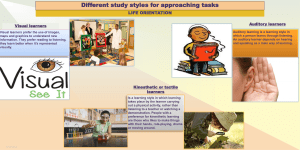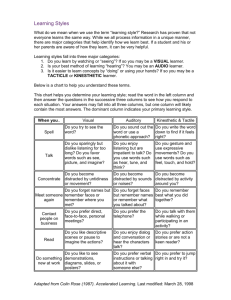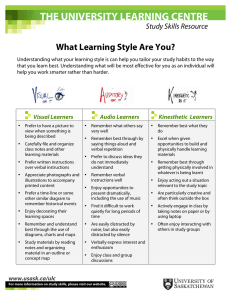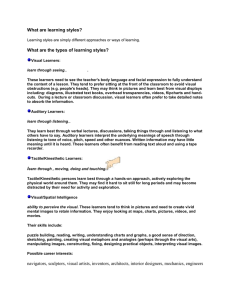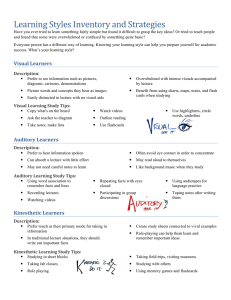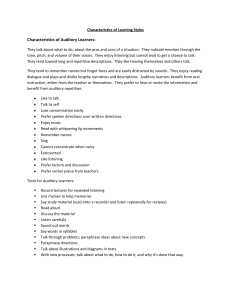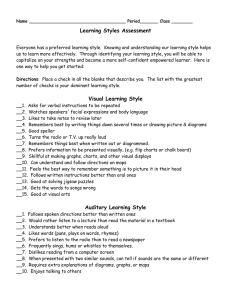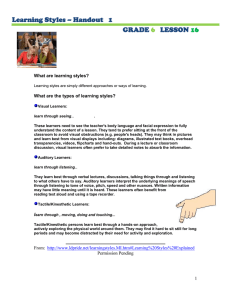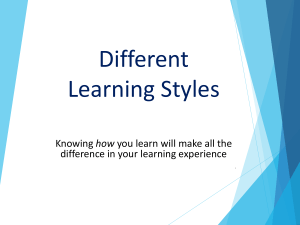The Three Learning Styles BMI3C –Career Studies
advertisement
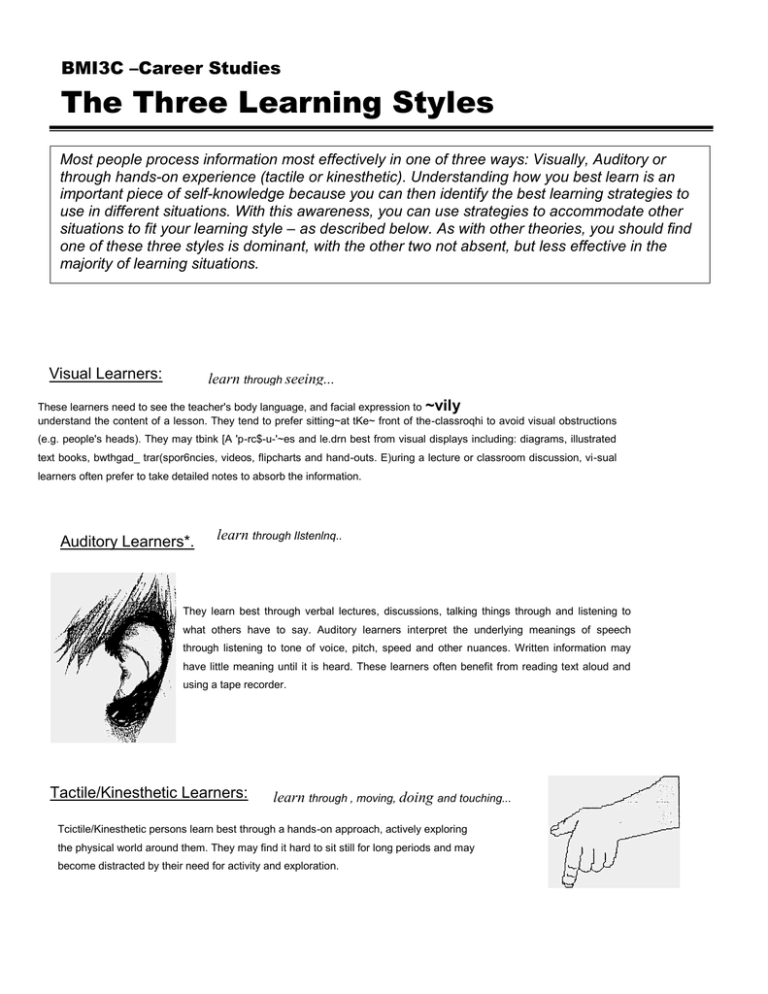
BMI3C –Career Studies The Three Learning Styles Most people process information most effectively in one of three ways: Visually, Auditory or through hands-on experience (tactile or kinesthetic). Understanding how you best learn is an important piece of self-knowledge because you can then identify the best learning strategies to use in different situations. With this awareness, you can use strategies to accommodate other situations to fit your learning style – as described below. As with other theories, you should find one of these three styles is dominant, with the other two not absent, but less effective in the majority of learning situations. Visual Learners: learn through seeing... These learners need to see the teacher's body language, and facial expression to ~vily understand the content of a lesson. They tend to prefer sitting~at tKe~ front of the-classroqhi to avoid visual obstructions (e.g. people's heads). They may tbink [A 'p-rc$-u-'~es and le.drn best from visual displays including: diagrams, illustrated text books, bwthgad_ trar(spor6ncies, videos, flipcharts and hand-outs. E)uring a lecture or classroom discussion, vi-sual learners often prefer to take detailed notes to absorb the information. Auditory Learners*. learn through Ilstenlnq.. They learn best through verbal lectures, discussions, talking things through and listening to what others have to say. Auditory learners interpret the underlying meanings of speech through listening to tone of voice, pitch, speed and other nuances. Written information may have little meaning until it is heard. These learners often benefit from reading text aloud and using a tape recorder. Tactile/Kinesthetic Learners: learn through , moving, doing and touching... Tcictile/Kinesthetic persons learn best through a hands-on approach, actively exploring the physical world around them. They may find it hard to sit still for long periods and may become distracted by their need for activity and exploration. Appendix 1. 29 THE THREE LEARNING STYLES Visual Do you try to see the word? Do you sparingly but dislike listening for too long? Do you favor words such as see, p ture, and imagine? Do you become distracted by untidiness or movement? Auditory Tactile/Kinesthetic Do you sound out the word or use a phonetic approach? Do you enjoy listening but are impatient to talk? Do you use words such as hear, tune, and think? Do you become distracted by sounds or noises? Do you forget faces but Do you write the word down to find if it feels right? Do you gesture and use expressive movements? Do you use words such as feel, touch, and hold? Do you become distracted by activity around you? remember names or Do you remember best remember what you talked what you did together? Do you forget names but remember faces or remember where you met? about? Do you prefer direct, face-toface, personal meetings? Do you prefer the telephone? Do you talk with them while walking or participating in an activity?j Do you like descriptive scenes or pause to imagine the actions? Do you like to see demonstrations, diagrams, slides, or posters? Do you enjoy dialog and conversation or hear the characters talk? Do you prefer verbal instructions or talking Do you prefer action stories or are not a keen reader? Do you prefer to jump right I t it with someone a ou Ise? Do you enjoy hearing in and try it? verbal instructions about directions and figure it out how to do it? as you go along? Do you call the help desk, Do you keep trying to do it ask a neighbor, or growl at or try it on another the computer? computer? Do you ignore the Do you look at the directions and the picture? Do seek out pictures or you I CO) 11 titer,"7~- diagrams? 'p~ i 1, ri" A claptedfi-oi?i Coli7i Rose(] 98 7). A ccelet-a ted Lea 1-17 ill,-"
